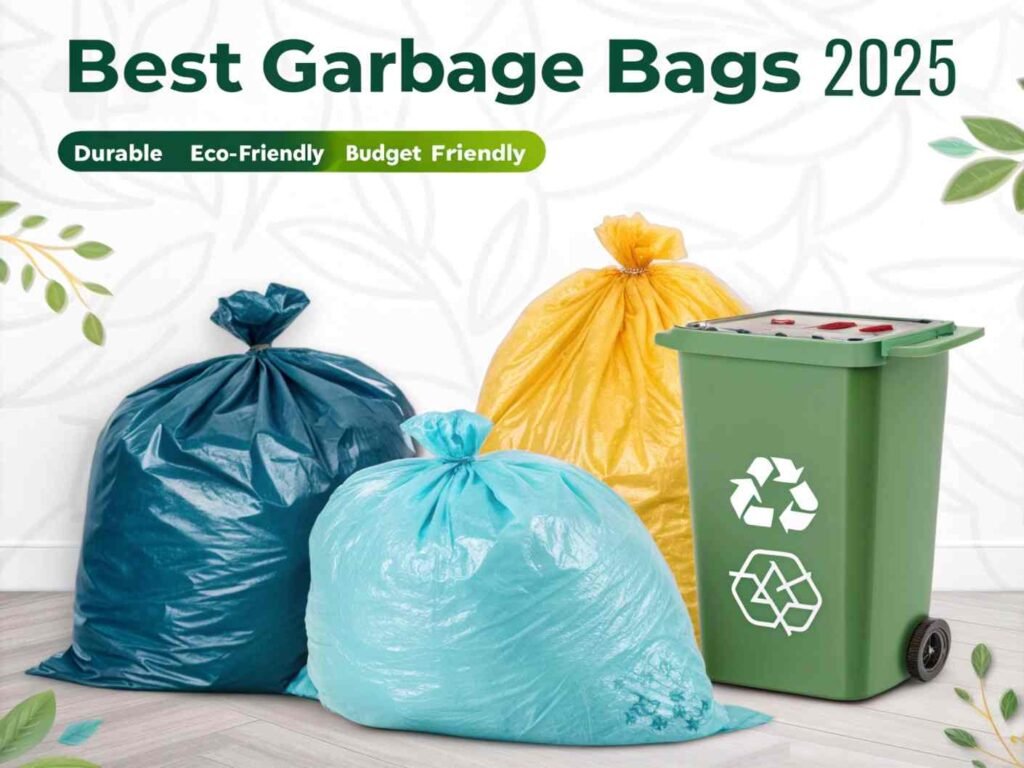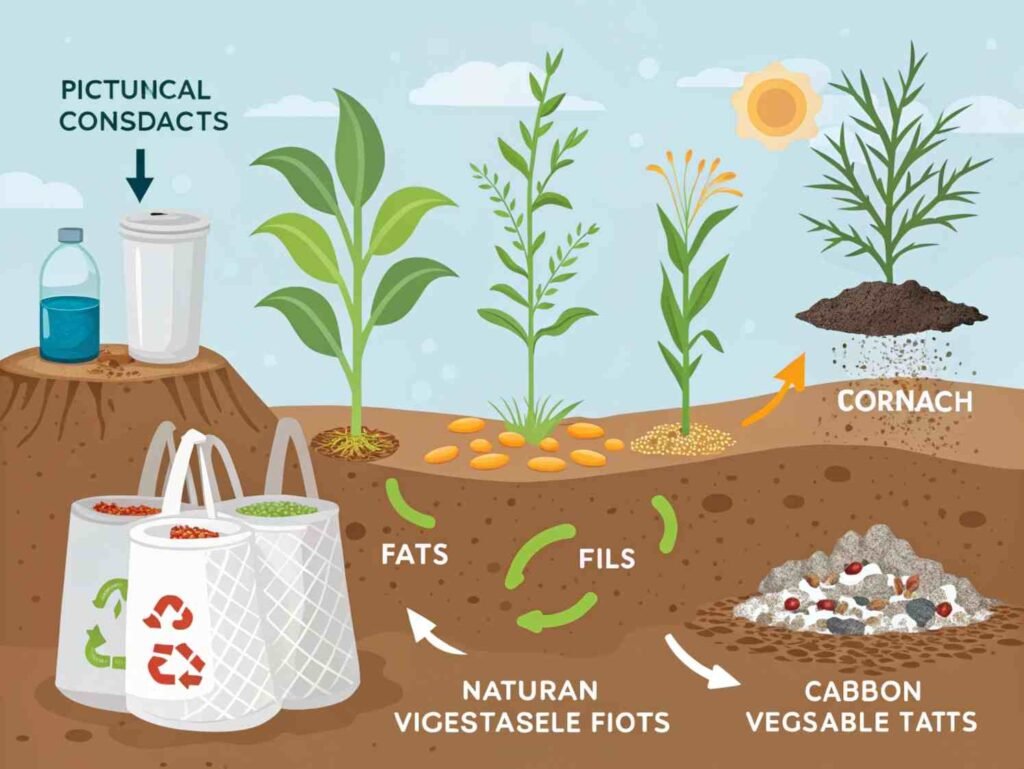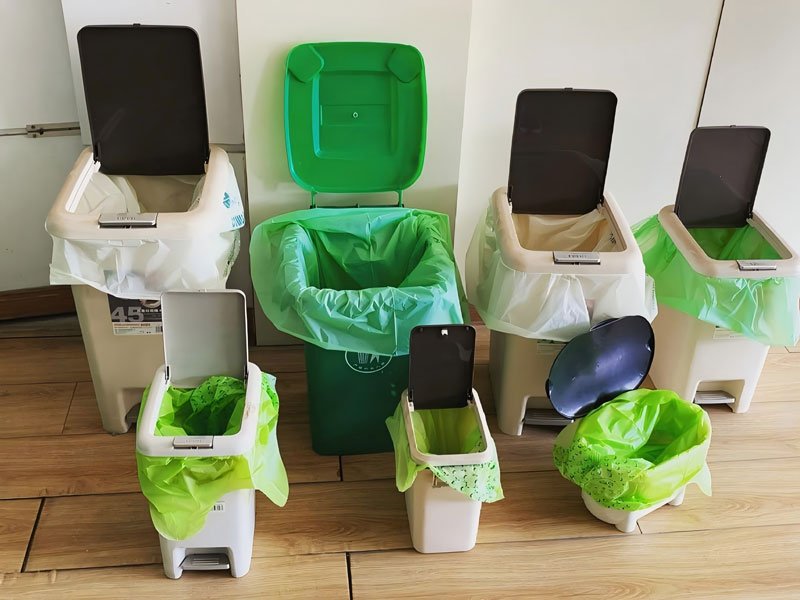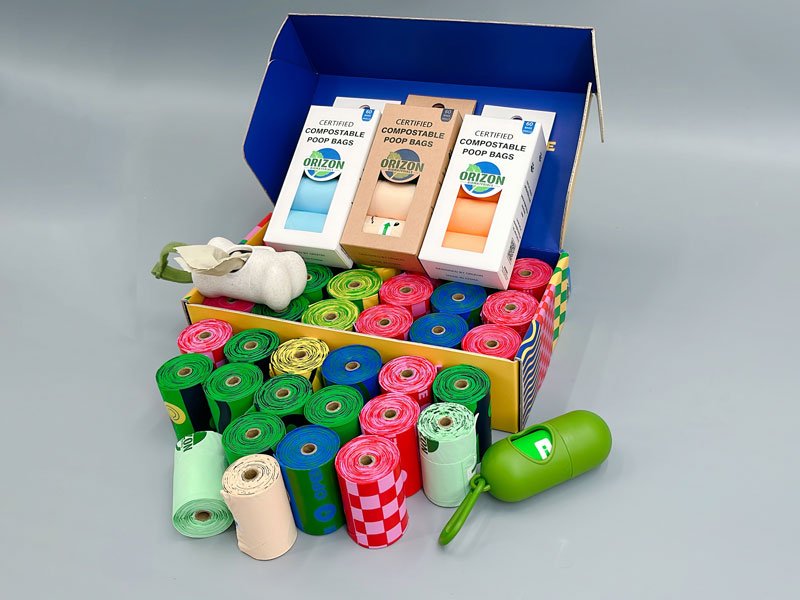When pursuing a healthy and environmentally friendly life, choosing compostable trash bags or If you want to reduce your impact on the environment, replacing traditional plastic trash bags is a great place to start. Start exploring alternatives. What is the difference between compostable and biodegradable trash bags? How do you choose?
A lot of times compostable is confused with biodegradable. In fact, the two terms mean very different things, especially when it comes to how these trash bags break down, where they end up, and whether they actually help the planet. Let compostable bag manufacturers explain it in simple terms so you can make an informed, eco-friendly decision.
What Are Compostable Trash Bags?
Compostable trash bags are made by microorganisms under specific composting conditions into natural substances such as water, carbon dioxide and biomass. No toxic residues or microplastics are left behind during the decomposition process.
Materials for making compostable trash bags
- PLA (polylactic acid)
- PBAT (polybutylene adipate terephthalate)
- Corn starch mixture
Two types of composting:
Industrial composting: high temperatures, controlled humidity, and microbial activity. Most compostable bags are certified to degrade in 90-180 days under these conditions.
Home composting: lower temperatures and a slower process. Only some compostable bags are certified this way.
Certifications:
- ASTM D6400 (USA)
- EN13432 (EU)
- OK Compost Home/Industrial (TÜV Austria)
- BPI Certified (Biodegradable Products Institute)
These certifications guarantee that the bag will fully break down in composting conditions, without harming the soil or environment.

What Are Biodegradable Trash Bags?
Biodegradable trash bags break down into smaller components "over time" under natural conditions.
Biodegradable trash bags do not always break down into harmless substances. They often break into tiny fragments (microplastics) and remain in the environment for years.
Biodegradable plastic bags are made from:
- Traditional plastics mixed with additives
- Oxo-degradable plastics (break down when exposed to oxygen and sunlight)
“Biodegradable” isn’t a regulated term in many countries. That means anyone can slap it on a label with no clear definition, no standard timeline, and no guarantee that the bag will safely decompose.
In landfills, where oxygen and sunlight are scarce, these plastic bags can take decades to degrade—if they degrade at all.
Compostable vs Biodegradable Trash Bags: Key Differences
Environmental Impact
- Compostable: Leaves no toxic residue; contributes to healthy soil
- Biodegradable: May leave microplastics or harmful chemicals behind
2. Decomposition Time & Conditions
- Compostable: 90–180 days in industrial compost
- Biodegradable: Unpredictable; can take years
3. Certifications & Standards
- Compostable: ASTM D6400, EN13432, BPI, OK Compost
- Biodegradable: Often lacks official certification
4. Disposal Method
- Compostable: Green bin or compost pile
- Biodegradable: Often ends up in landfill
5. Real-World Example: Comparison Table
| Feature | Compostable Bag | Biodegradable Bag |
|---|---|---|
| Certified? | Yes | Rarely |
| Breaks down in home compost? | Sometimes | No |
| Breaks into microplastics? | No | Often |
| Needs oxygen/sunlight to break down? | No | Yes |
| Suitable for green bins? | Yes | No |
Which Trash Bag Should You Choose?
Choose compostable trash bags if:
- You separate organic waste (food scraps, yard waste)
- Your waste goes to a composting facility
- You want a truly eco-friendly solution
Choose biodegradable bags if:
- Composting isn’t available
- You're using them for general, non-organic trash
- Budget is a concern (biodegradable bags may be cheaper)
However, when sustainability is your priority, compostable bags are the superior choice.

Watch Out for Greenwashing
Many products labeled "eco-friendly" or "green" use confusing terms to appear sustainable. Always look for third-party certifications to verify a product's claims.
Beware of:
- Vague terms like "environmentally safe"
- Labels that say "biodegradable" but don’t mention standards
- Brands that can't provide certification proof
Genuine compostable bags will have visible labels from BPI, TÜV Austria, or similar bodies. Look for the Seedling logo or OK Compost mark.
Which Trash Bag Should You Choose?
The right choice depends on how you'll dispose of the bag:
- If your city supports green bin programs, compostable bags are the clear winner.
- If you home compost, look for the OK Compost Home label.
- If you care about leaving zero toxic residue, always go compostable.
Biodegradable bags may sound appealing, but in reality, they're often just traditional plastic bags with a greenwashed label. Compostable bags, when properly certified and disposed of, are a far more sustainable choice.

Conclusion
Biodegradable and compostable trash bags are not the same. Compostable bags are designed to break down completely and safely in composting environments, leaving behind nutrient-rich soil. Biodegradable bags, on the other hand, are often unregulated and can leave behind harmful microplastics.
If you're looking to make a truly eco-friendly switch, certified compostable trash bags are the way to go. They're better for the planet, better for the soil, and better for your conscience.
👉 Looking for bulk compostable trash bags for your business?
Want to switch to certified compostable trash bags? At Orizon Biomaterials, we specialize in BPI and EN13432 certified compostable solutions for households, businesses, and brands.
Explore Our Compostable Trash Bags ➜
FAQ
What’s the difference between compostable and biodegradable trash bags?
Compostable bags break down into safe compost under set conditions; biodegradable bags degrade over time, often leaving residues.
Can compostable bags go in the regular trash?
They can, but they won't compost in landfills. Best to use in composting systems.
Are biodegradable trash bags actually eco-friendly?
Not always. They often break into microplastics without full decomposition.
Are compostable bags better for the environment?
Yes—when properly composted, they leave no harmful residue and reduce plastic pollution.



